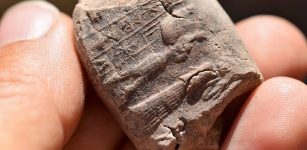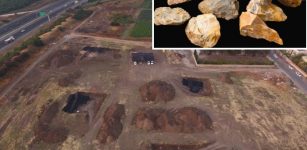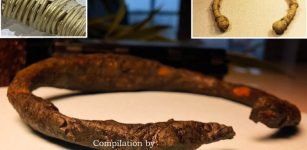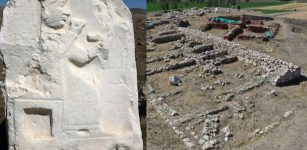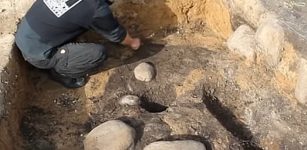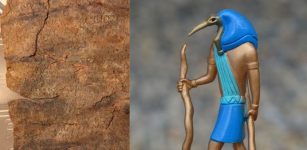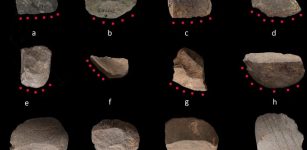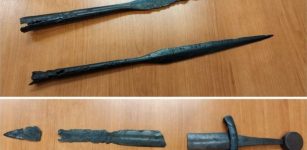2,700-Year-Old Grinding Stone Excavated In Urartian Castle Of Cavustepe, Turkey
AncientPages.com - A 2700-year-old grinding stone dating back to the Urartian era has been unearthed by a group of archaeologists in Turkey's eastern Van province.
The stone, used in grinding grain products like barley and wheat in eastern Van's Gurpinar district, was found during excavations conducted in an Urartian castle of Cavustepe.
The rectangular stone, measuring 54 by 30 centimeters (21 by 11 inches), was used through ages, Rafet Cavusoglu, the head of the excavation team and an archeology professor at Van's Yuzuncu Yil University, told Anadolu Agency.
Cavusoglu informed that it is the fourth stone discovered since the start of the 2014 excavations at the castle -- built by the Urartian King Sardur II in 750 B.C.
"When we examined the stones, we understood that they were one of the most important tools in human nutrition," he said, citing its worn-out surface. Around 120 clay vessels -- thought to be used in winter for grain storage -- were also unearthed uncovered during the excavations., " reports Daily Sabah.
See also:
2,800-Year-Old Urartu Jars Uncovered In Eastern Turkey
Urartu was an Iron Age kingdom located near Lake Van and the mountainous plateau between Anatolia, Mesopotamia, the Iranian Plateau, and the Caucasus Mountains. The kingdom was established around mid-ninth century B.C. and was conquered by the ancient Iranian people of Medes in the early sixth century B.C.
Cavustepe, on the other hand, is an ancient fortified site in the Van province, it is also known by the title of Fortress of Hayk. The structure made up of two sections of an Urartian Empire palace and the lower section of the fortress which includes a variety of buildings.
The palace was built during the reign of King Sarduri II in 764-735 BC, the lower section was built around the 7th century and included a temple, kings tower, workshops, storehouses, cisterns, and even a harem. While the fortifications were destroyed in the 7th century, evidence of later occupation during the medieval era.
AncientPages.com




